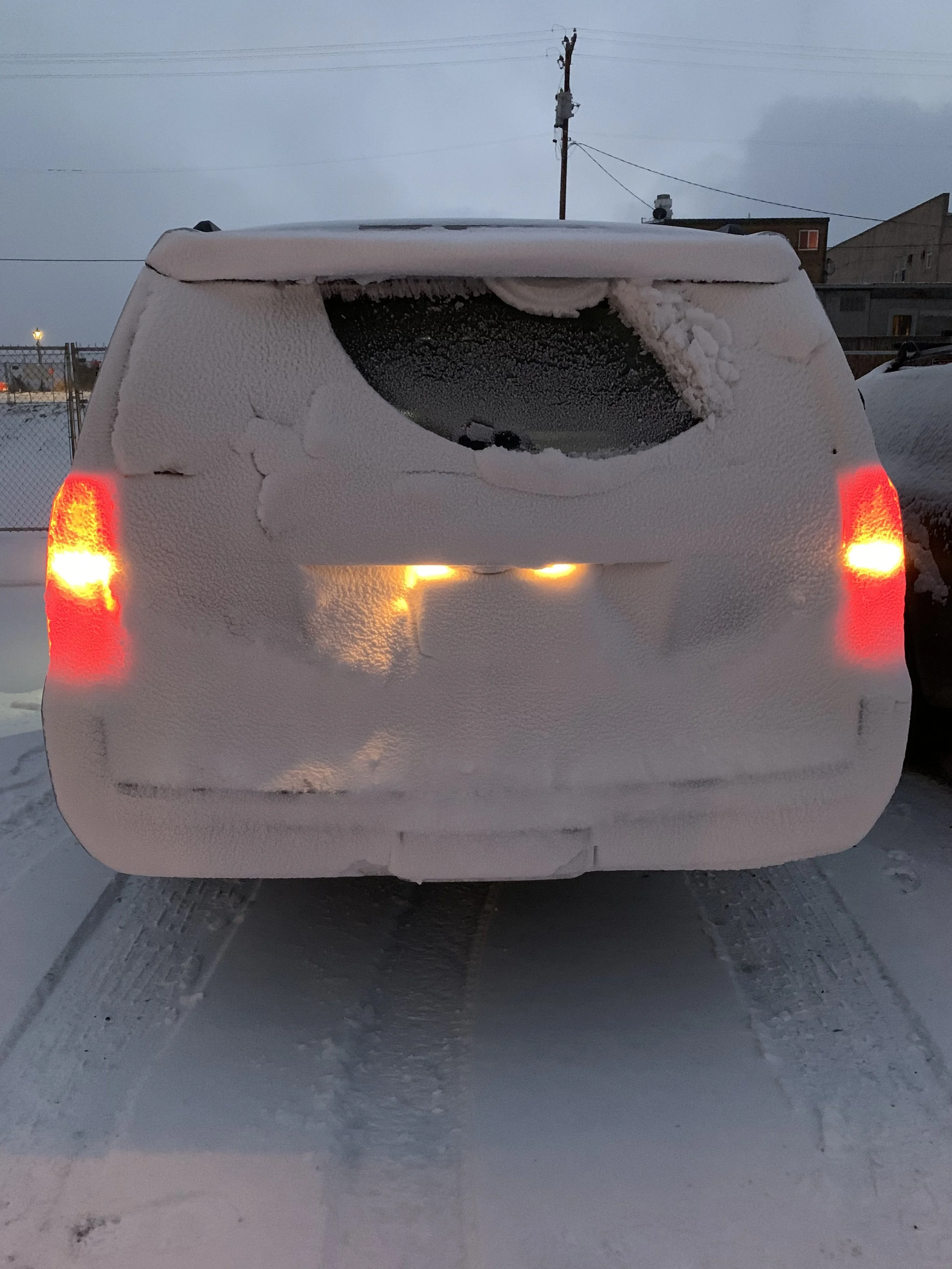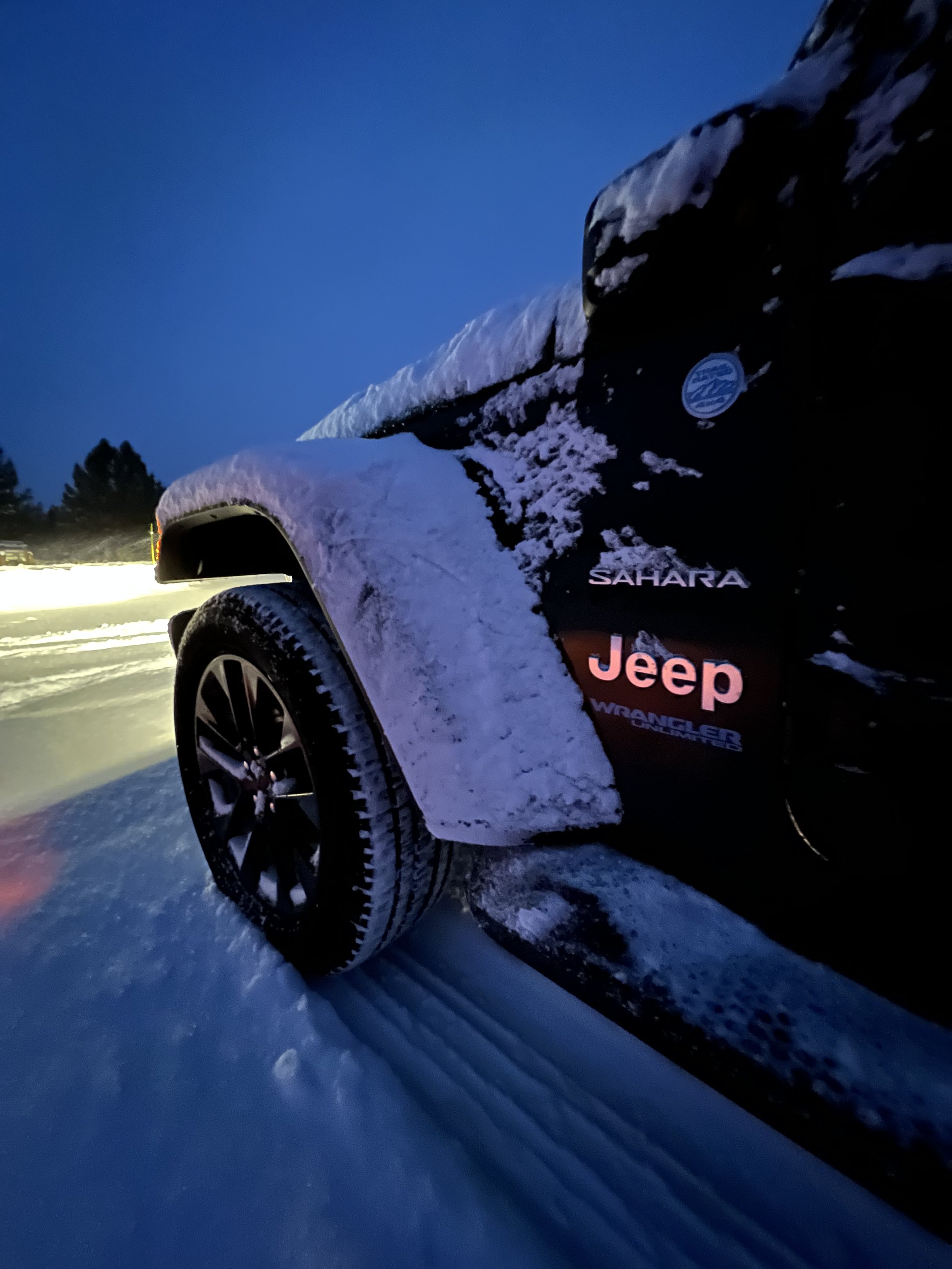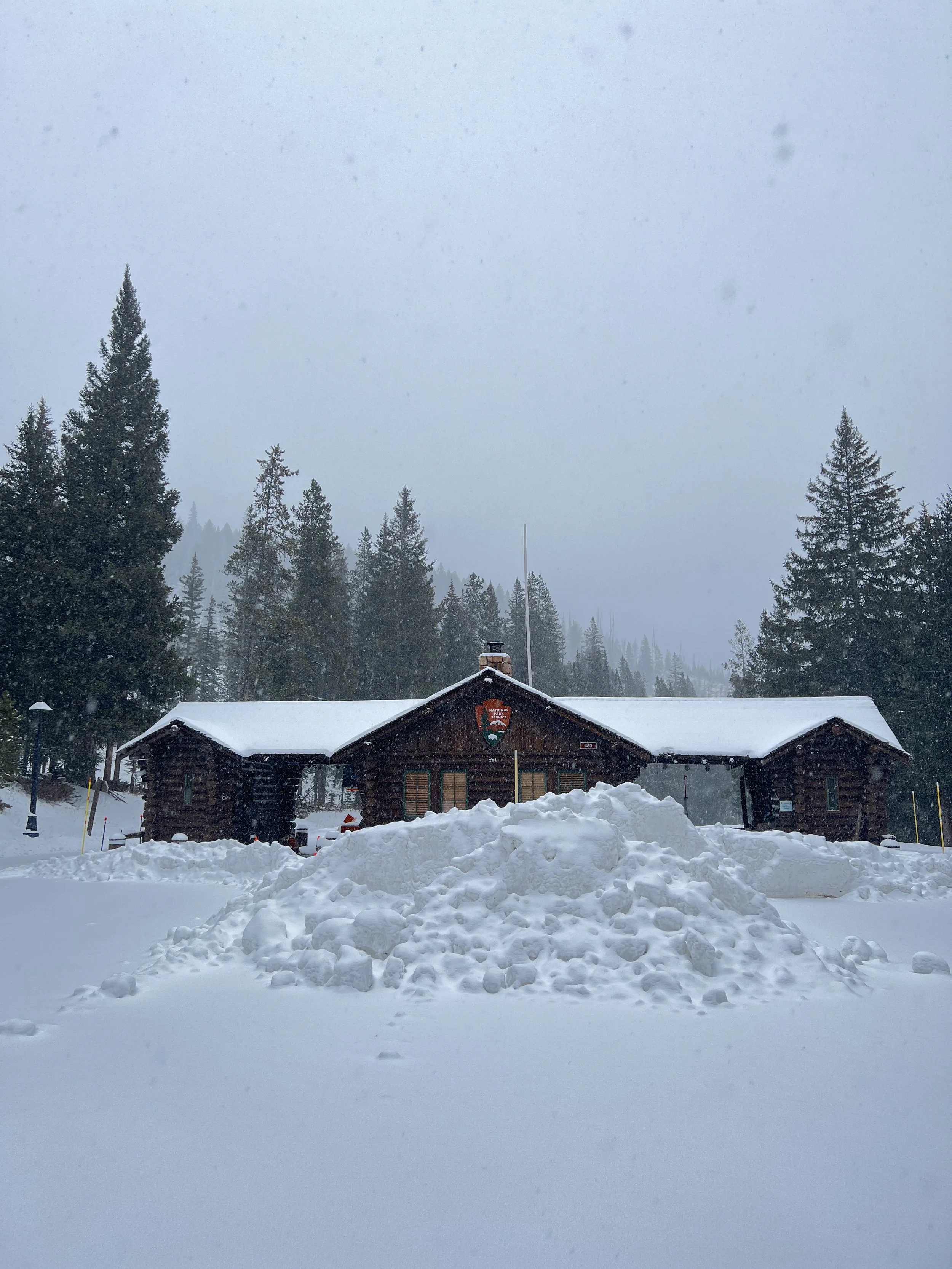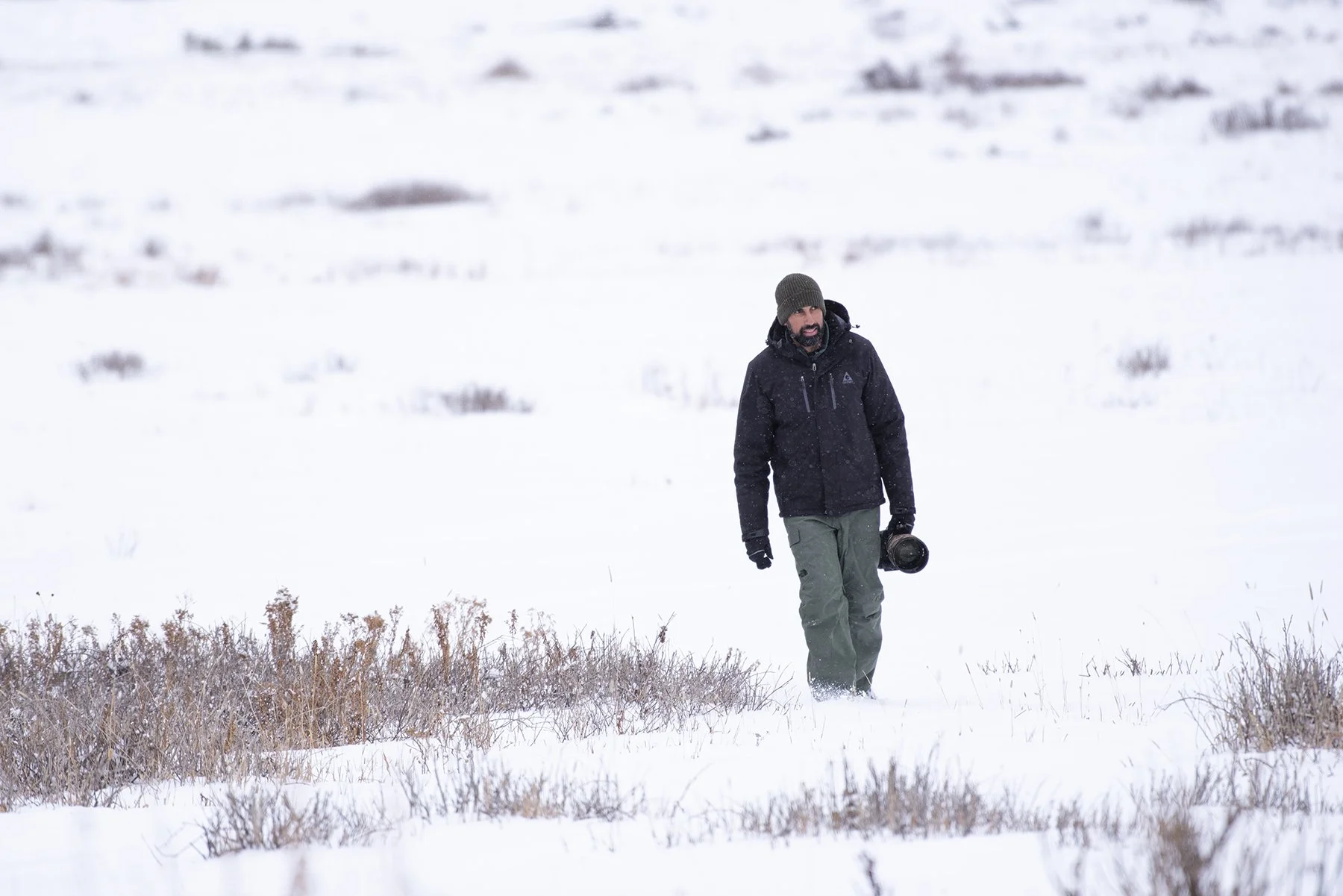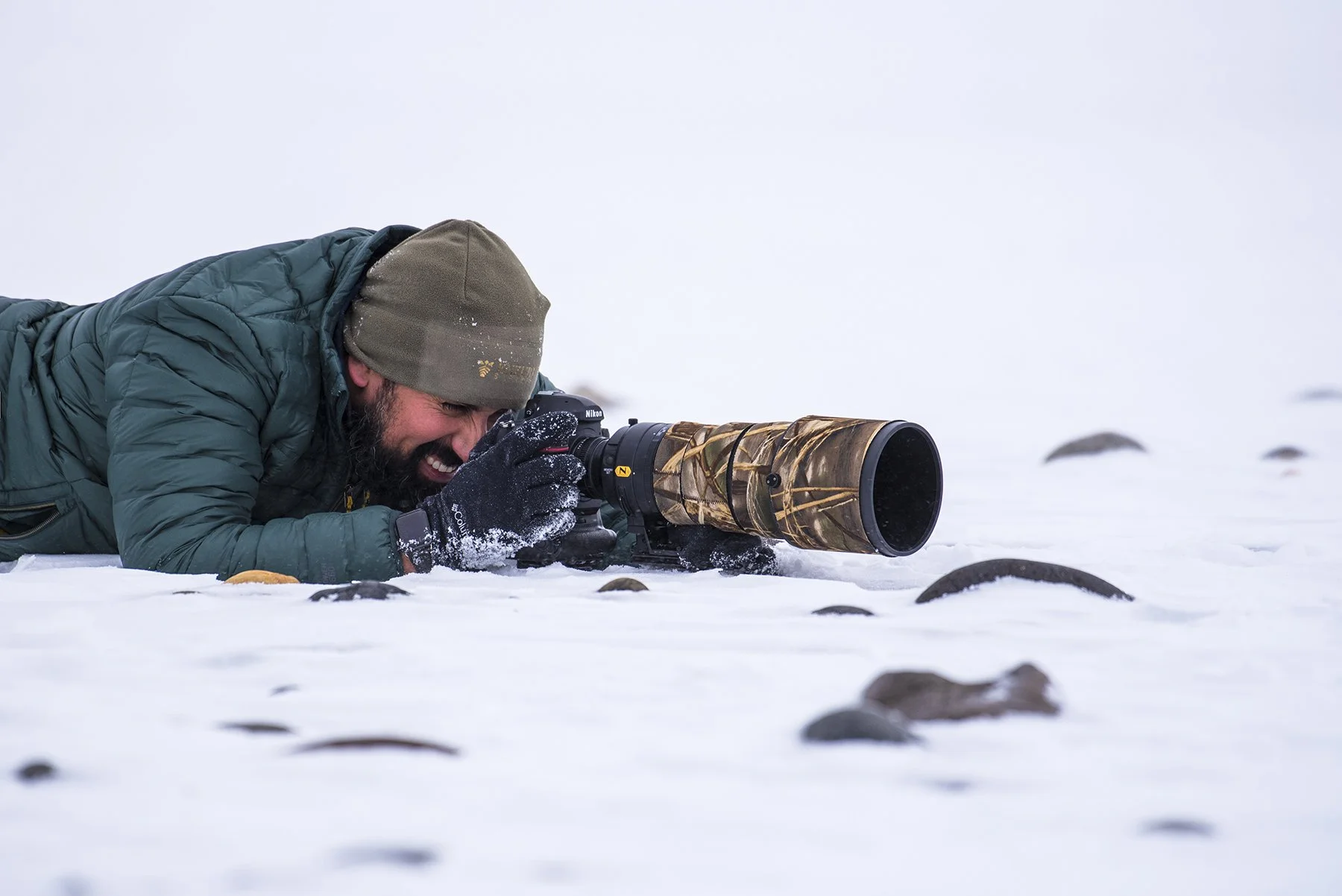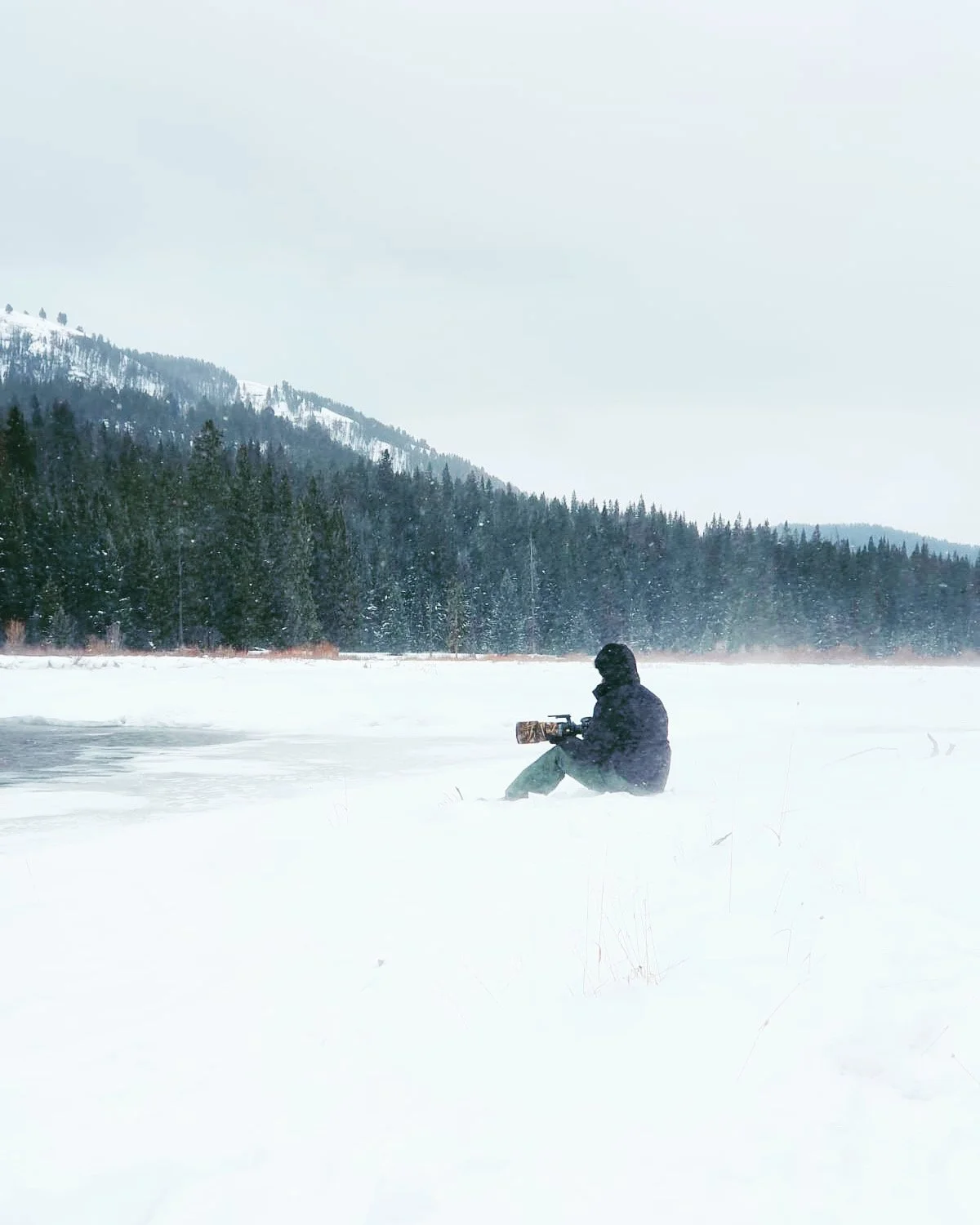Yellowstone – A Wonderland Beyond Winter
It’s early April, and even though the calendar signals the eminent arrival of spring, the vast expanse of this breathtaking wilderness is still covered in deep snow, as it fights off the final clutches of another brutal winter. The many inhabitants that call Yellowstone home have endured another one of its unfathomable winters, and for those strong enough to have survived, the rising temperatures surely signal that the epilogue of winter will soon be upon them… for another year at least.
During the winter months most human activity in Yellowstone comes to a halt. Temperatures drop to levels that are simply incomprehensible. Due to the amount of snow, roads close and access to the park is very limited. Simply put, winters in Yellowstone are extremely harsh. However, in stark contrast to this unforgiving environment, the severe elements of winter transform this extraordinary land into what can only be described as a winter wonderland.
Logistically, winter is a tougher season to get around Yellowstone, because of the road closures and limited access, one has to traverse the park by way of snow mobile, snow coach, or if you have an all-wheel drive SUV, then exploring the northern part of park via the road from Gardiner to Cooke City are your best options. It’s essential to know what type of winter Yellowstone experience you are seeking and then plan accordingly. For a wildlife photographer, the Northern part of the park can prove to be very rewarding during the winter months, as many species congregate in this region during winter because of its lower elevation.
Gardiner, a picturesque little town, that has the feel of the west of yesteryear with the conveniences of the modern world. Now, I know what most of you might be thinking, the terms “modern world conveniences” and “adventure” don’t really go together, but let me assure you, after a long day of trekking through the snow, freezing temperatures and wet clothes… all you want is a hot shower, hot meal and warm bed. These “modern world conveniences” get you ready for another day of trekking through the snow, freezing temperatures and wet clothes. Akin to the shower, meals and bed, the people of this quaint town are warm souls. They welcomed us and honestly made us feel like locals. Another one of Gardiners’ appeals was its close proximity to Yellowstone, it was in all essence part of this great park. It was as enticing as it was a no brainer, we used Gardiner as our home base for this adventure.
After much planning we decided to forgo the use of over the snow vehicles and to focus our efforts between, Gardiner (North Entrance), Mammoth, Tower-Roosevelt, Lamar Valley, Pebble Creek and Cooke City. This approach put us in a high density wildlife area, however the caveat to that was that we would have to do quite a bit of trudging through the snow (and mud) to photograph certain subjects, but adventurers we were and no amount of snow trudging was going to deter us.
Just like any great safari, your images reflect the work you have put in. So, with that said, we started each day at dawn, doing our best to not only maximize our time exploring but also allowing us to get to key areas as early as possible. Wildlife photography often requires a lot of waiting, so the more time you allow yourself to wait, the better your chances are. This was my first time entering the park from the north entrance and seeing the iconic Roosevelt Arch for the first time was something really special. This iconic monument was constructed under the supervision of the US Army at Fort Yellowstone, its cornerstone was laid down by President Theodore Roosevelt in 1903. The top of the arch is inscribed with a quote from the Organic Act of 1872, the legislation which created Yellowstone, which reads: "For the Benefit and Enjoyment of the People". The Roosevelt Arch, just another reason that solidifies the importance of places like Yellowstone, places that are not only incredible wilderness that must be conserved, but also places that are steeped in history, a history that must be preserved.
The first thing that takes your breath away when you visit Yellowstone during the winter is how quiet it is. No cars, no tour busses, no noisy tourists, just a quiet wilderness… but it’s not an eerie quiet, it’s more of a beautiful quiet, its spiritual. I looked out at this astonishing wilderness, and couldn’t recognize it, a place I had just visited not more than a few months ago, covered in this deep blanket of snow, completely transformed.
Evolve and adapt we must;
Although we initially planned to make the daily half-day trip to Cooke City and then back to Gardiner in the evening, we decided to evolve our game plan based on wildlife activity or at least stick to areas that gave us the best opportunity. We noticed that the area from Pebble Creek to Cooke City was still covered in extremely deep snow (much to deep to venture into) and the extreme nature of the landscape made it very hard to stop and search for wildlife. So, our altered plans were to spend our time exploring Lamar and the area up to Pebble Creek. This proved a wise choice as were gifted a number of incredible sightings and moments in this area. We opted to forego lunch and just pack some snacks in our vehicle each day. Thankfully, a combination of these snacks and our adrenalin subdued any hunger pangs till dinner in Gardiner each day. (Nothing like pizza after a long day of not eating much).
Winter in Yellowstone is so different from anything you will ever experience. It’s just so peaceful, so serene, you get lost in the beauty of it all. It’s the serenity of these winter scenes that allow you to enjoy extremely intimate moments with some of the incredible creatures that find refuge within Yellowstone’s seemingly infinite landscape. Often times you find yourself alone at a sighting, with no other human for miles, just you and this incredible being, sharing a moment with you, allowing you the fortune of looking through the keyhole and getting a glimpse of a world that many will never experience… Spending time in the company of a bison, the great gatekeeper, in a moment so intimate that you can feel the breath leaving its lungs is what makes Yellowstone a place like no other. As a wildlife photographer you not only become part of this incredible wilderness, but you are also left completely exposed to this magnificent environment. This allows you to capture more emotive images and tell more intimate stories. You not only capture a moment, but you become deeply ingrained in it as well.
When you look beyond her awe-inspiring vastness and imposing wilderness, Yellowstone reveals those intimate moments that make her truly special. It is when you spend time getting lost in these fragile moments that she lifts her veil and shows you beauty unlike any you have seen before. This is how she intoxicates you and leaves you forever yearning for her to let you into her embrace just one more time.
She doesn’t simply embrace you once, but over and over again, each time holding on to you just that much longer. Sometimes she uses her gatekeepers, other times she lifts the veil on her flawless vistas and landscapes, this time however she introduced me to a little red fox. I had walked down to the bottom of a small hill to photograph a moose that we had seen from a distance, but as I was setting up my gear, I noticed something from the corner of my eye, and before I knew it, she walked into the scene and took center stage. A red fox, quite possibly one of the most beautiful creatures I had ever laid my eyes on, getting ready for her morning hunt. If just seeing this fox was not spectacular enough, watching her hunt her prey as they scurried about 4 feet under the snow was astonishing. One of the greatest experiences of my life. She was as delicate as the morning breeze, sweeping silently over this frozen landscape. Her beautiful coat like a paintbrush, leaving soft flawless strokes across this pristine canvas of white. She was the source of my uninhabited bliss much like she was the reason this day was beautiful… she was the reason that moment will live with me forever. Yellowstone was stealing my heart all over again. This was just another story in the great tale that is Yellowstone, its seasons, its wildlife and their ability to endure elements that we simply couldn’t even fathom, and of course it’s the story of what this great wilderness does for the human spirit.
The vastness of Yellowstone during any time of the year, but especially winter, cannot be understated. This is an imposing and at many times a daunting wilderness, but it is also pristine and sublimely beautiful. Just like the time spent with this fox, Yellowstone has just so many incredible stories to tell. Some stories that wow you and leave you awe struck, while others that simply humble you. More often than not though, each of its stories leave you inspired, as an adventure and a simply as a child of this world. Yellowstone is a shining example of what can be achieved when we agree that our planet is worth fighting for and preserving, not just for wildlife, but for the human spirit as well. Places like Yellowstone are not just refuges for wildlife, they are also places where the human spirit goes to find peace, Like those words, immortally etched in stone on the Roosevelt Arch so poignantly state, “For the benefit and enjoyment of the people”.
Winter in Yellowstone, beautiful, sublime, life changing.



